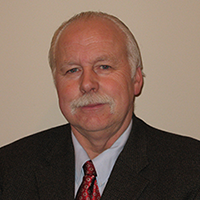 What is safety? A set of rules and practices? An organizational value? An individual responsibility? A set of metrics that indicate performance? Risk management and the costs and benefits? Probably all of those, but something a little less visible, I think. Safety is a reflection of the level of engagement your employees from top to bottom bring to the organization. It is, without question, the most common rallying cry that bonds and unites people in the construction workplace. But it is also the foundation upon which engagement is built. And the effort has some unusual roots based in the following case study.
What is safety? A set of rules and practices? An organizational value? An individual responsibility? A set of metrics that indicate performance? Risk management and the costs and benefits? Probably all of those, but something a little less visible, I think. Safety is a reflection of the level of engagement your employees from top to bottom bring to the organization. It is, without question, the most common rallying cry that bonds and unites people in the construction workplace. But it is also the foundation upon which engagement is built. And the effort has some unusual roots based in the following case study.
In 1987 Alcoa Aluminum was in trouble. It was an organization that was underperforming at every level internally and suffering in the marketplace. Productivity was poor. Quality was poor. Clients were not happy. And the answers that had been enacted to date were ineffective. Along came a leader with a new set of ideas based on the idea that if you could find a rallying point for everyone, that intersection of belief and buy-in could serve as a cornerstone for progress in all other areas. The CEO Paul O’Neil sifted through recommendations of the many senior level executives and came away headed in a totally different direction. Instead of focusing on manufacturing processes, quality initiatives, or productivity enhancement, he decided the starting place would be safety. When he announced this, the market punished him and major brokerages all went to a Sell recommendation.
He had a vision of unifying everyone. Something that everyone could believe in. Something everyone could get behind. Something that benefited everyone and the company. Many were left scratching their heads wondering if this leader was crazy—a broken company is starting with safety to rebuild itself? But he was on to something powerful. One year after he made that speech to investors, the company hit record profits. By the time he retired 13 years later the company had increased profits 500 per cent. (See his YouTube presentation on Safety as the Keystone Habit.)
It turns out, having that common vision and objective was exactly what the company needed. It was the thing that bonded labour and management. It was a clear indicator by the company that they cared about their employees’ health and welfare. It was a brilliant, simple, and effective foundation upon which to build. And build they did.
Alcoa, in a relatively short time, built a culture of safety, but also a culture of unity and belief. Most importantly though, it build a culture of engagement. Engagement in the workplace is what leads to buy-in and commitment. It is the door you have to open for your employees to voluntarily walk through. It is the opportunity to participate and, more importantly, contribute. It is this that we are achieving at a remarkable pace in our industry today.
Many safety award winners are firms that maintain flawless records. Many of my clients will work millions of man-hours without lost time incidents. These, at face value, are strong indicators of vigorous and effective safety programs and training. But what they really reflect, most of all, is the level of committed engagement evident in the workplace.
This lesson is vitally important as we continue our efforts to attract young people to our industry. Generation X and especially the Millennials are seeking engagement as a primary element of their workplace experience. Engagement, even more than money, is the currency of retention. It is the effort made by companies today to show they care and that they want and need input and participation by everyone in the workplace.
I think there are lessons to be learned and applied here. There are many other areas of jobsite focus in which we can use our “safety engagement” expertise for great dividends. But those are secondary to asking the questions over and over again: “how do we engage our people? How do we obtain their buy-in and commitment? How do we tap their talent and discretionary effort? How do we build off of safety, precisely how Alcoa did, to reap long-term rewards?
Take a big picture look at safety, engagement, and culture. Think about how Alcoa bridged the safety focus to company performance. Ask yourself what are we doing that works amazingly well and how can we leverage it in other areas of our business? Engagement, once gained, is a powerful tool. Let’s be visionary about how we build the industry of the future based on the hard lessons learned on our way to today’s safety excellence.



